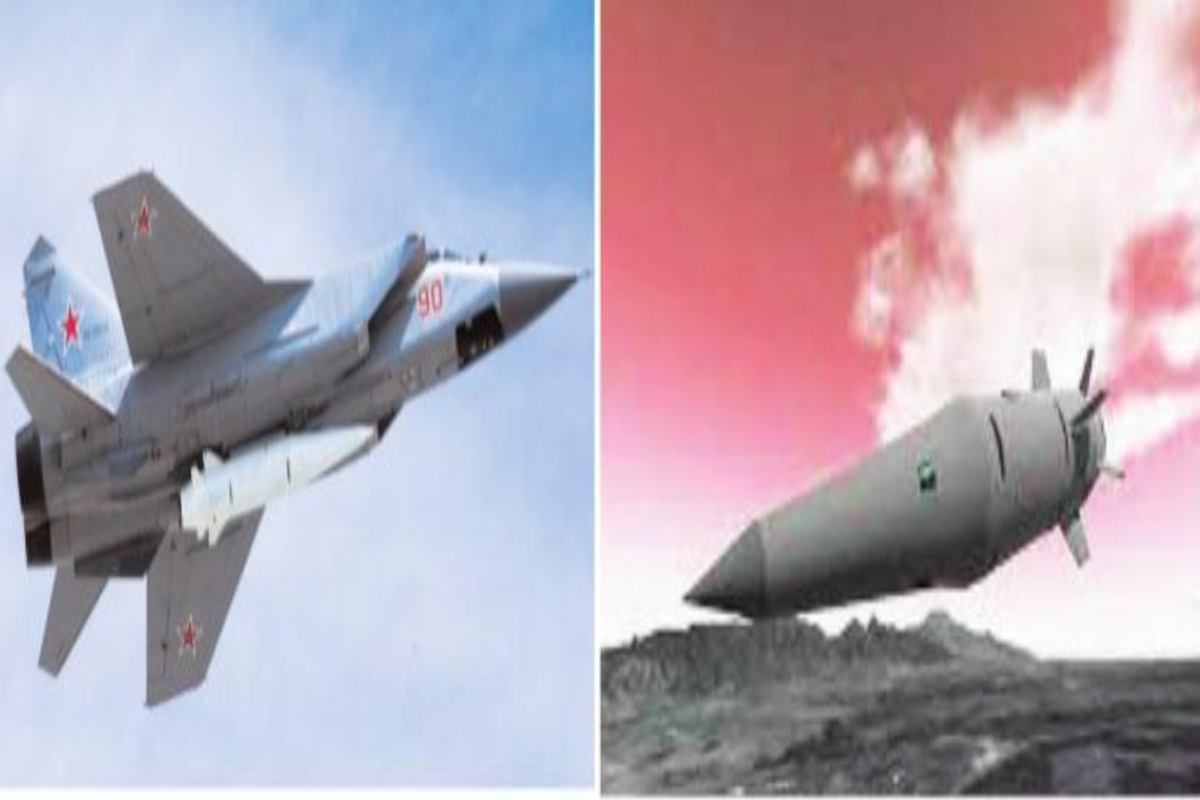In November 2021, Russia launched a Direct Ascent Anti-Satellite Missile (DR-ASAT) to destroy its own defunct satellite, Kosmos 1408, littering space with 1,500 pieces of microscopic debris which posed an immediate danger to both the Chinese space station “Tiangong” and the International Space Station (ISS). Russia was not the first nation to conduct an ASAT; China in 2007, the USA in 2008, and even India in 2019 had done the same. But the increasing frequency of such tests by space-faring nations indicates the increasing militarisation and weaponisation of space.
Space has long been used for communication, tracking, imagery, positioning, navigation, and satellite surveillance; many of these have potential for military uses and some countries have developed comprehensive space-based architecture to facilitate military activities on the ground. While militarization of space is pretty old – even during World War II, Germans had used their V2 rockets for military purposes – weaponisation is a recent phenomenon; it involves putting weapons with significant destructive potential in space or on celestial bodies.
Space weapons can target enemy assets like satellites or weapons systems in space either from the earth or from systems placed in orbit above the earth. Space weapons generally fall into two categories: Directed-Energy Weapons (DEW) and Kinetic-Energy Weapons (KEW). A DEW seeks to destroy its target with focused energy of lasers, microwaves, particle beams, etc., while a KEW does so by firing projectiles from space towards the earth; these acquire destructive powers through kinetic energy simply by falling at high velocities. These projectiles can be as basic as metal rods, or as advanced as a multiple independently targetable re-entry vehicle (MIRV) ~ a missile payload that contains multiple warheads capable of striking multiple targets simultaneously.
According to a June 2021 research study by Claire Mills and others titled “Militarisation of Space” and published by the House of Commons Library, UK, there are 3,372 satellites in space, of which 2,612 (77 per cent) are in low earth orbit (LEO, up to 2000 kms above the earth). 562 more are in geosynchronous earth orbit (GEO, at 35786 kms distance), also known as geostationary orbit as a satellite here appears stationary to an observer on the earth due to the same orbital period. Only 139 are in medium earth orbit (MEO, between the LEO and the GEO); 516 of all these satellites are estimated to have a military or dual-use purposes, and over half of these ~ 265 ~ are in LEO, where their low altitude coupled with short orbital periods make them ideal for earth observation and surveillance.
The USA leads the constellation of satellites with 1,878 satellites, followed by China (405), Russia (174), the UK (166), Japan (82) and India (60). As of February 2022, India had only 53 operational satellites in space. Space also has a substantial litter, corpses of nearly 3,000 satellites purposelessly roam the loneliness of space, besides 34,000 pieces of junk exceeding 10 cm in size. All these orbiting bodies pose a significant risk to future satellites. Some countries like Japan are trying to cleanse space of such debris by using lasers to push them back into the terrestrial atmosphere where they will automatically burn up.
International law classifies outer space as a ‘Global Common,’ meaning outside any country’s national jurisdiction and hence to be governed only by international legislation. The high oceans, Antarctica, and even cyberspace are examples of ‘Global Common’, in respect of some of which there are international treaties. International law, including the Charter of the United Nations, applies to outer space and celestial bodies, which are free for exploration and use by all nations in conformity with international law. Activities in space are regulated by the United Nations Outer Space Treaty (OST) of 1967 which has been ratified by 111 nations.
As per Article II of the treaty, “Outer space, including the moon and other celestial bodies, is not subject to national appropriation by claim of sovereignty, by means of use or occupation, or by any other means.” Article IV of OST prohibits the “establishment of military bases, installations and fortifications, the testing of any type of weapons and the conduct of military manoeuvres on celestial bodies” while binding nations not to “place in orbit around the earth any objects carrying nuclear weapons or any other kinds of weapons of mass destruction, or install such weapons on celestial bodies, or station such weapons in outer space in any other manner”. The responsibility for this lies with the United Nations Office for Outer Space Affairs (UNOOSA), which lacks the necessary legal authority or even the institutional capacity to enforce it effectively. In the absence of any effective enforcement mechanism, it is left to the discretion of individual countries who would be inclined to put their own national interests over the interests of the global common.
Another agreement in 1979, the Moon Agreement, similarly forbids the use of the moon for military purposes or its weaponisation, but this treaty has been ratified by only 18 countries, which includes no spacefaring nation. The big three space powers – USA, Russia and China – have not even signed it. India and France had signed the treaty in 1980 but haven’t ratified it so far. As the space race heats up, it becomes even more necessary to bring nations together into negotiation leading to agreements about the peaceful use of space. So far there is not even an agreement on where the earth ends and space begins, e.g., NASA defines space to begin at 80 kms above the sea level on earth, while some other organisations define it at 100 kms. If countries cannot even agree on the distance at which space begins, implications may indeed be serious.
As Tim Marshal says in his book, “The Power of Geography”, (Elliott & Thompson, 2021), if nation ‘A’ believes that space begins at 80 kms and nation ‘B’ believes it begins at 100 kms, then if ‘A’ flies its satellite over ‘B’ at 90 kms, the latter can shoot it down. The OST did not even define ‘peaceful purpose’; Russia wants it to mean that all military-related activities should be illegal, while the USA asserts that military purposes are lawful as long as they remain ‘non-aggressive’, which as per the UN Charter means activities that prohibit ‘the threat or use of force’, a definition that leads to multiple contradictions. This ambiguity was sought to have been removed by the Moon Treaty which remains inoperative in the absence of ratification by a majority of the world’s nations.
The rising economic activity between the Moon and the Earth, an area called Cislunar, will make it imperative for space-faring nations to establish a military presence on the lunar sur- face. Nations like France, USA, Russia and China have already created separate Space Divisions in their military for the protection of their space assets which may trigger another arms race in space. The US Space Force created in 2019 by President Donald Trump is based on the dictum that “Space is a war-fighting domain”. China, after creating a Defence Space Force in 2015 as part of the People’s Liberation Army’s Strategic Support Force incorporating cyber and electronic warfare, brought out a White Paper in 2016, setting out its long-term strategic goal of becoming a “space power”.
As an aspiring space power with demonstrated capability, India cannot afford to remain behind, especially in view of the extraordinary increase in Chinese space assets and its unconcealed ambition to rule space. Russia has already tested its hypersonic missile, Kinzhal, in 2021 and even used it in its ongoing war with Ukraine; USA and China are also close in the race to develop such missiles. These missiles fly at more than 20 times the speed of sound and can change their direction and altitude making it difficult to intercept them. Since hypersonic missiles depend on satellites to operate, and since satellites are not only essential for civil and military communications but are also crucial for detecting and notifying missile attacks, each country would like to develop the capability to strike the other’s satellites.
China has been reported to have developed a microwave device called “Relativistic Klystron Amplifier” (RKA) that can jam or destroy satellites in space by generating 5-MW wave-bursts; RKAs can even be mounted on satellites to destroy targets in space like any other DEW. There are also reports of satellites of one nation stalking the satellites of other nations, like in 2020 when Russia’s Kosmos 2542 military satellite was reported to have stalked the American satellite USA 245, besides conducting what is believed to be a ‘weapon test’ by firing a high-speed projectile. Regarding the use of space as a military domain, the existing international treaties are clearly insufficient, and realising this, in November 2021, the UN General Assembly approved a resolution seeking to appoint a new open-ended working group to develop rules for military activities in space. But rules can be enforced only when several countries have developed enough capability to deter each other from using them, like nuclear weapons. This makes it imperative for India also to focus on developing space weapon systems and try catching up with China which is already far ahead of us in space technology. Only then can any UN-mediated negotiation for making space weapons-free carry some meaning.











